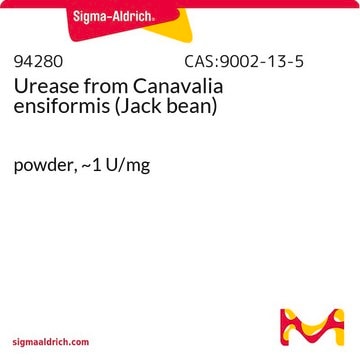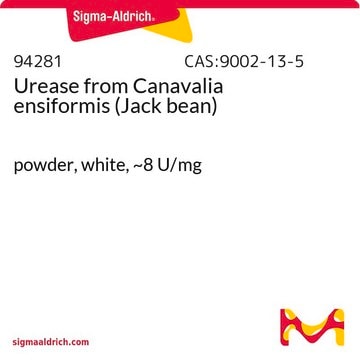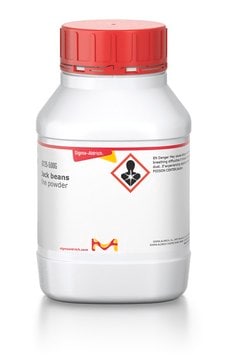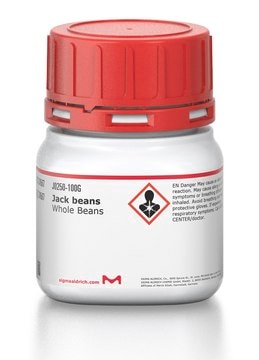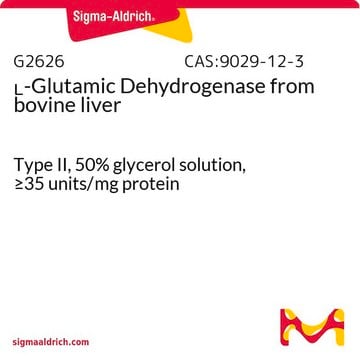U1875
Urease from Canavalia ensiformis (Jack bean)
Type III, glycerol solution, 500-800 units/mL
Synonym(s):
Jack bean urease, Urea amidohydrolase
About This Item
Recommended Products
biological source
Canavalia ensiformis
type
Type III
form
glycerol solution
mol wt
~544620
concentration
500-800 units/mL
storage temp.
2-8°C
Looking for similar products? Visit Product Comparison Guide
General description
Composed of six subunits with total molecular weight: ~544,620
Application
- to assay creatine and creatine phosphate using the sample extracted from the left ventricle (LV) and septal tissue
- to determine the concentration of urea in a stabilized urine sample
- as one of the standards to measure the urease activity of plant extracts
Biochem/physiol Actions
Unit Definition
Signal Word
Danger
Hazard Statements
Precautionary Statements
Hazard Classifications
Eye Irrit. 2 - Resp. Sens. 1 - Skin Irrit. 2 - STOT SE 3
Target Organs
Respiratory system
Storage Class Code
10 - Combustible liquids
WGK
WGK 1
Flash Point(F)
Not applicable
Flash Point(C)
Not applicable
Certificates of Analysis (COA)
Search for Certificates of Analysis (COA) by entering the products Lot/Batch Number. Lot and Batch Numbers can be found on a product’s label following the words ‘Lot’ or ‘Batch’.
Already Own This Product?
Find documentation for the products that you have recently purchased in the Document Library.
Customers Also Viewed
Our team of scientists has experience in all areas of research including Life Science, Material Science, Chemical Synthesis, Chromatography, Analytical and many others.
Contact Technical Service

